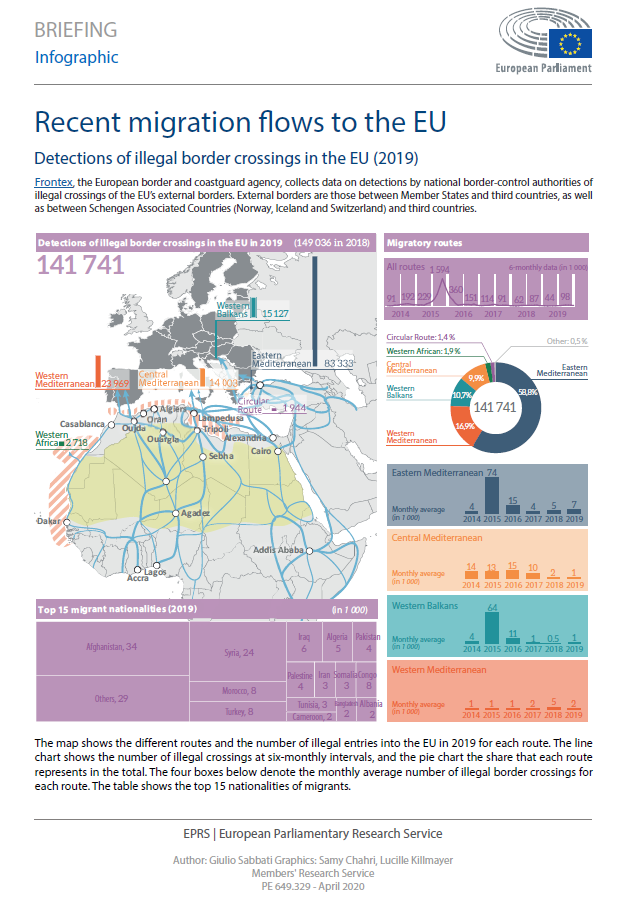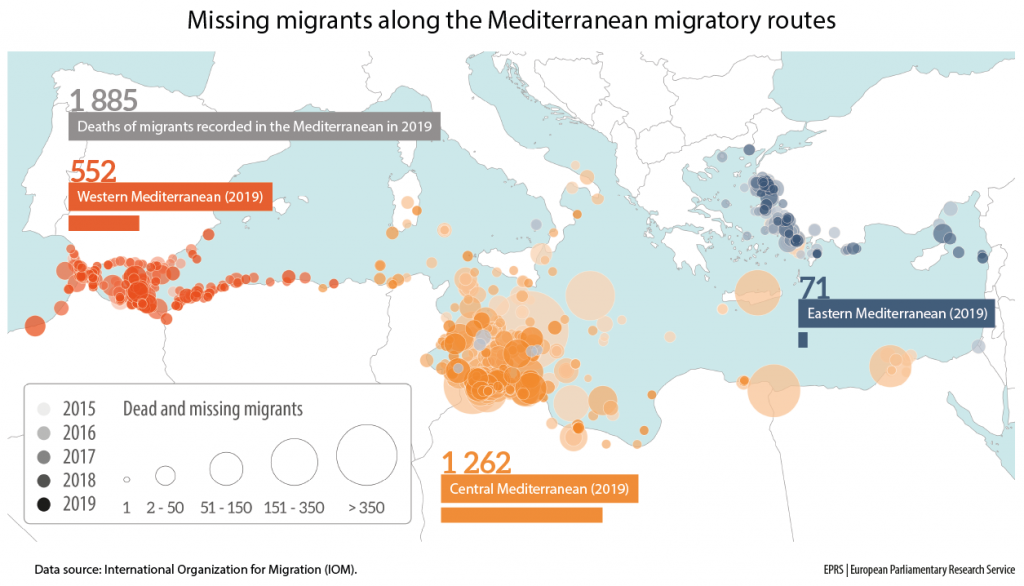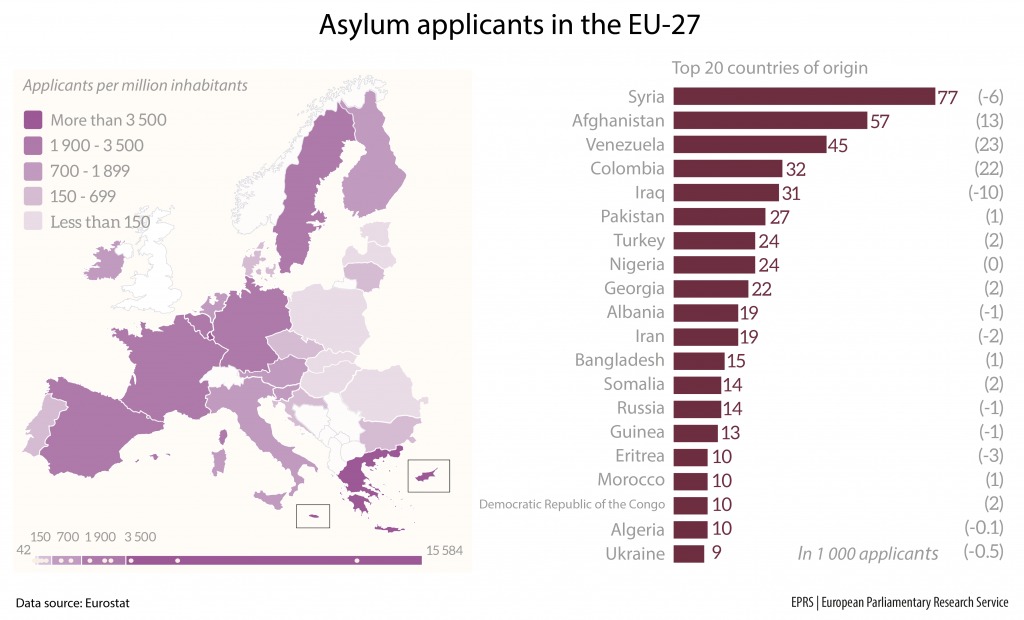Written by Giulio Sabbati,
Graphics: Samy Chahri, Lucille Killmayer,
This infographic aims to present the latest available data on migrant flows to the EU in the year 2019. It covers the detection of illegal crossings on the EU’s external borders, numbers of deaths of migrants on those crossings, the number of asylum applications in EU Member States and their decisions on those applications. This Infographic updates and complements previous editions issued in September 2015 (PE 565.905), in April 2016 (PE 580.893), in February 2017 (PE 595.918), in December 2017 (PE 614.604) and in May 2018 (PE 621.862).
Detections of illegal border crossings in the EU (2019)
Frontex, the EU border surveillance agency, collects data on detections by national border-control authorities of illegal crossings of the EU’s external borders. External borders are those between Member States and third countries, as well as between Schengen Associated Countries (Norway, Iceland and Switzerland) and third countries.
The map shows the different routes and the number of illegal entries into the EU in 2019 for each route. The line chart shows the number of illegal crossings at six-monthly intervals, and the pie chart the share that each route represents in the total. The four boxes below denote the monthly average number of illegal border crossings for each route. The table shows the top 15 nationalities of migrants
Missing migrants along the Mediterranean migratory routes
Missing migrants along the Mediterranean migratory routesThe International Organization for Migration (IOM) carries out the Missing Migrants project, aimed at compiling data on migrants who have died or gone missing, either at the external borders or in the migration process. It excludes, for instance, deaths in refugee camps or during return to a migrant’s homeland, or as a result of labour exploitation. Various sources of data are used such as relevant national authorities, IOM field missions, direct reporting by IOM and other organisations receiving survivors, and media reports. IOM and UNHCR make sure that data are consistent.
Read the complete briefing on ‘Recent migration flows to the EU‘ in the Think Tank pages of the European Parliament.
Visit the European Parliament page on ‘Migration in Europe‘.











Be the first to write a comment.